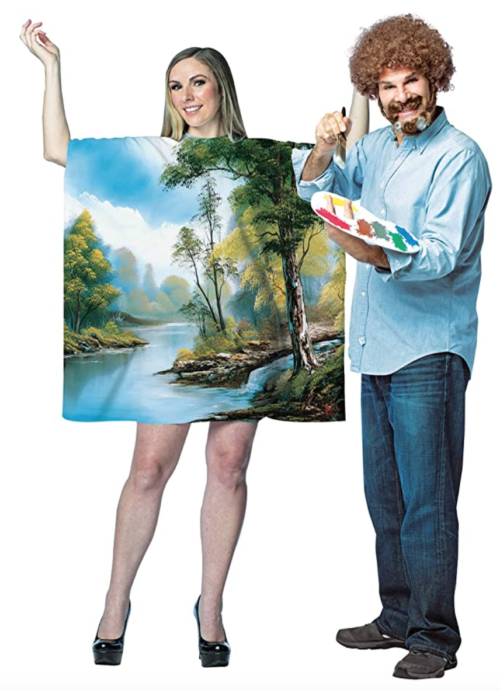The 1980s, in many ways, was the decade responsible for establishing the modern obsession with commercializing art (see: Patrick Nagel). As such, it can be no wonder that Bob Ross, the ultimate quotidian painter “of the people,” rose to such prominence and acclaim. In a post-Warhol climate, the continued potential for taking the mass consumption of art to the next level was bound to manifest in the form of appealing to the proverbial “lowest common denominator” by assuring the ilk that watched public access television that, yes, “anyone” could paint. From the color blind to the decrepit. That was Ross’ “gospel” message to the people. And one that his “benefactors,” the Kowalskis, quite literally took to the bank.
The idea of turning art into a practice “for the common man” was not only one step further than where Warhol went with the commercialization of the medium via screenprinting and the style that would become known as pop art, but also performed by “the corporations that be” for selfish as opposed to selfless reasons (obvi). Although Bob Ross may have merely been caught in the crossfire of what was to become a “trending” practice, his spokesperson-like nature for the so-called “everyman” artist would serve as a goldmine (for select parties) throughout the 80s, 90s and beyond.
Arming the hoi polloi with paintbrushes and the belief that “anyone” has the aptitude to be an artist, it was only natural to see a boom in the presence of craft stores like A.C. Moore (ultimately acquired by Michael’s) in suburban sprawl areas. Although Michael’s itself—still the mac daddy of arts and crafts stores for the rabble—opened in 1973, the market greatly opened up for expanding locations with the onset of the 80s. Not a coincidence considering the presence of PBS shows like Bill Alexander’s The Magic of Oil Painting and Gary and Kathwren Jenkins’ The Beauty of Oil Painting, and, of course, the most popular of them all: Bob Ross’ The Joy of Painting.
Ross’ ability to quickly “throw together” a landscape within a thirty-minute timeframe (thanks to the wet-on-wet technique he adopted from his mentor, the aforementioned Bill Alexander) also added to the appeal of his simplified directive: painting is for everybody. By positioning art as something therapeutic and beneficial to the soul (which, yes, is true, but also leads to, let’s say, an over-saturation of “competition” in the field for people with legitimate talent), Ross’ creed was embraced not just in the United States, but globally. This phenomenon, too, spoke to the idea that art’s commercialism at this level was a direct result of the infection of Americanism into other countries as the late twentieth century wore on (and the Berlin Wall fell). Part of the philosophy of such being that “anyone” can be and do “anything.”
The aspirational cachet of what Ross represented was therefore part of his (or rather, the Kowalskis’) financial success. A success that led him, for whatever reason, to think it was a good idea to appear on a children’s show called The Adventures of Elmer & Friends while he was knocking on death’s door due to his lymphoma. The fact that said lymphoma was believed to be caused by, in part, the regular inhalation of benzene and ethylbenzene in the paints Ross used is more than somewhat cruelly ironic considering he so vehemently believed in the healing power of art. As it turns out, he realized, art has some pretty injurious power as well.
Art’s indistinguishable intersection with pop culture (ergo capitalism)—Ross himself deemed a pop culture icon—as the 80s forged ahead was a direct consequence of what the afro’d painter was doing. Of his insistence that the average person ought to take brush to canvas and “express himself.” This, in turn, opened up the propensity for neoliberalism to further taint art as “purveyors” sought to capitalize on the sudden interest in painting by selling overpriced materials for the practice.
In the twenty-first century, this notion has become even more bastardized due to the increasing lack of art’s tangibility (see: NFTs). And with the advent of easily accessible software (namely, the entire Adobe suite), as well as smartphone apps that put “art” into the hands of anyone and everyone, the “meaning” the medium once had has all but disappeared as a result of this seemingly ceaseless dilution (leading, so often, to delusion regarding one’s “talent”). All for the sake of commercialization, a tool, in the end, of globalization. A grotesque occurrence that, as some are willing to admit, serves nothing and no one other than the capitalistic machine. Which has absolutely nothing to do with pure art… as the numerous non-related-to-painting Bob Ross products for sale will tell you.






















